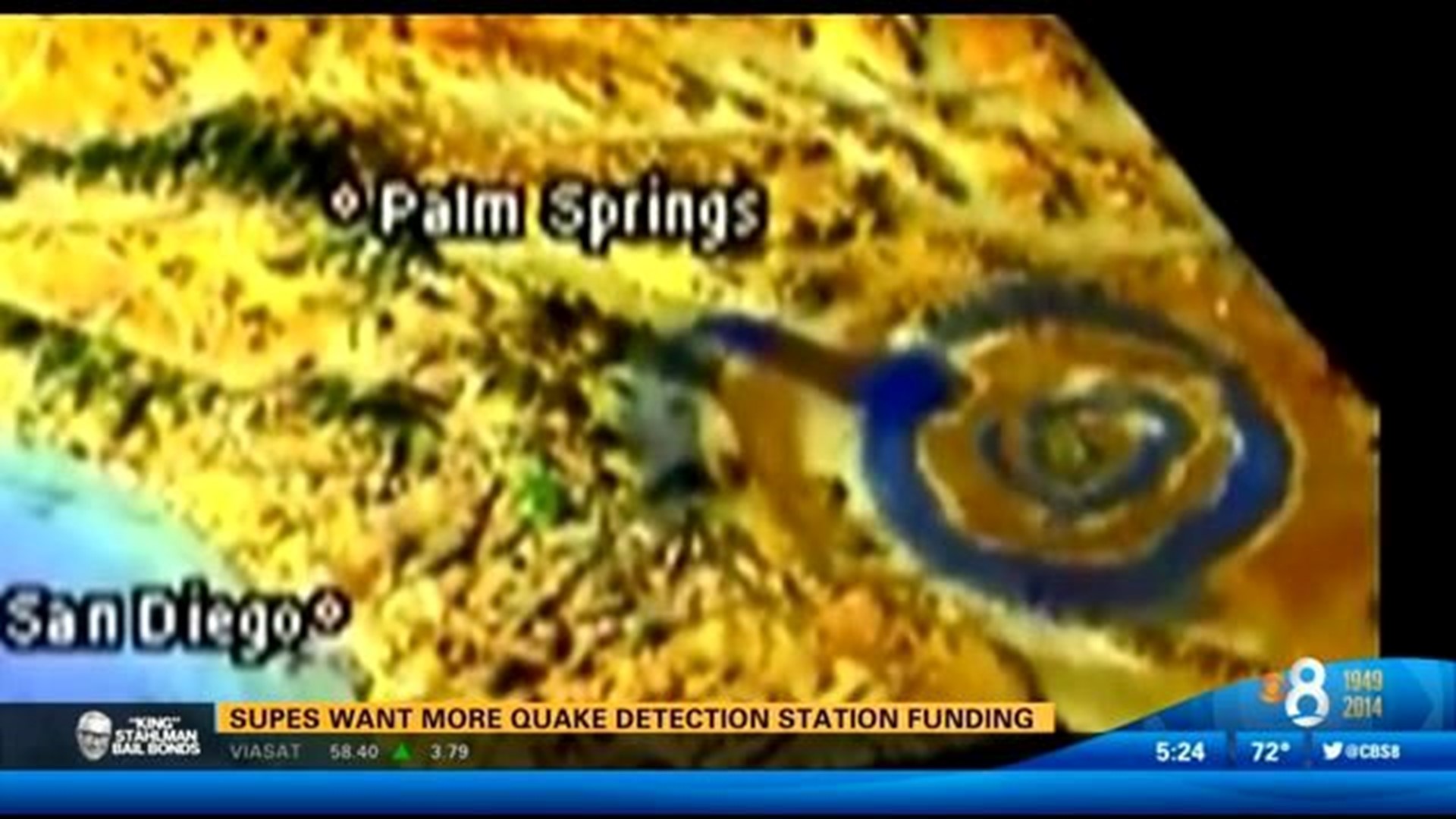SAN DIEGO (CNS) - The San Diego County Board of Supervisors urged the U.S. Geological Survey Tuesday to continue funding for two Scripps Institution-run earthquake detection systems and registered its support for an early warning system.
The USGS plans to cut funding for the Precision Geodetic Network, or Geodesy, which measures tension along the San Jacinto Fault and a network of 21 probes that measure shaking along the fault and five other monitoring stations elsewhere in San Diego County, according to the supervisors. Both are run by UC San Diego's Scripps Institution of Oceanography
"Scientists at Scripps have been monitoring seismic activity along the San Jacinto fault using a system of precise sensors. However, those state-of-the-art systems are now at risk due to potential budget cuts from the U.S. Geological Survey," Cox said.
Eliminating the network of 21 probes would leave only three USGS stations along to the San Jacinto Fault, which runs through San Diego and Imperial counties.
Cox said any advance warning of quake would be reduced. Instead of downsizing or doing away with the programs, the USGS should be working to expand seismic monitoring and create an early warning system.
The network of 21 probes can give officials in San Diego about 25 seconds warning of a quake along the San Jacinto Fault.
"That doesn't sound like a heck of a lot of time, but when lives are at risk on trolleys, in hospital operating rooms, or on construction sites with heavy machinery that's being operated, every second does count," Cox said.
Cox said if an early warning system was begun locally, continued funding for the ANZA system would be "fiscally prudent." If the network is eliminated, establishing a similar system would cost about $3 million, he said.
The Precision Geodetic Network is used to better gauge future earthquake risks and understand the dynamics of the fault, Cox said. Several local agencies use the advanced earthquake information, including Cal Fire.
Cox joined with Scripps Geosciences Research Professor Neal Driscoll and Scripps earthquake science specialist Luciana Astiz at the Scripps Institution of Oceanography Tuesday afternoon to reiterate the call for continued funding for detecting earthquakes in San Diego County.
"$100,000 in the federal budget is like a millisecond in the overall budget. We need to make sure it's not eliminated," Cox said.

